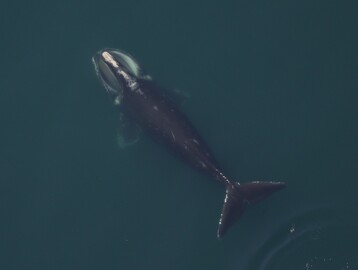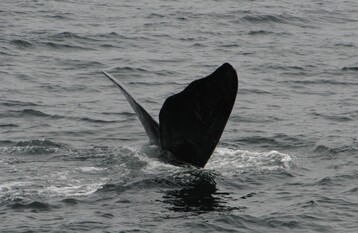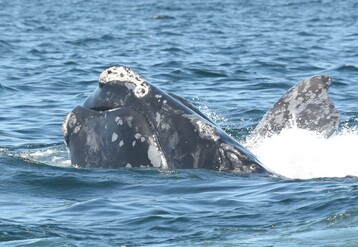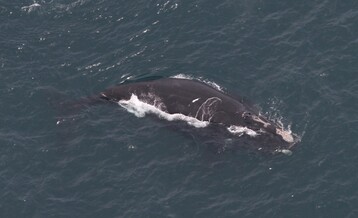Scientists Unveil New Names For Individual Right Whales
JohnCarl McGrady •

How do you name a whale? It turns out that scientists like to use their callouses.
Scientists from the North Atlantic Right Whale Consortium and other research organizations gave 18 North Atlantic right whales names this week, including "Lasagna" and "Hedgehog." And many of the whales are named after their callosity, distinctive white patches of hardened, raised skin.

All North Atlantic right whales have callosity, and it’s not a sign of anything amiss. The irregular patterns make it easier to identify the whales, as each individual’s callosity is unique, and they are now forming the basis of many of the whales’ names.
From Hedgehog to Bermuda and Scorpion to Taffy, a number of right whales are now named after the thickened skin, which, even in fully healthy individuals, is a critical habitat for two different species of highly specialized crustaceans.
The nature of the symbiosis between the crustaceans and the whales is not fully understood. The crustaceans get a habitat, but scientists disagree about whether the whales receive a benefit from the small creatures living on their skin.
Not all of the right whales named this year were named after their callosity. Five were named after scars, and a couple were named for other distinctive physical features.
In addition to names, the whales received short bios. Scorpion’s favorite song is The Fate of Ophelia, by Taylor Swift. Athene prefers Golden from the new KPop Demon Hunters film. Kodama is mischievous and likes to play tricks on researchers. The full list, with all of the names and bios, can be found here.
To choose the names, scientists submitted hundreds of nominations and then engaged in a ranked-choice voting process.

“Whale naming is a fun and lighthearted way to bring the community together,” said Amy Warren, Scientific Program Officer in the New England Aquarium’s Anderson Cabot Center for Ocean Life, who coordinates the naming efforts. “It also allows us to connect with the whales at an individual level, including their habits and relatives.”
North Atlantic right whales are highly endangered, and it is crucial for scientists to be able to easily identify and track the remaining members of the species. Names can make those efforts easier.
The extensive monitoring and conservation efforts undertaken by scientists working for organizations including the New England Aquarium and Whale and Dolphin Conservation - North America seem to be paying off. For the fourth straight year, the population of North Atlantic Right Whales has increased. As of the latest estimate, there are 384 whales, up 2.1 percent from the year before.
Still, the species faces serious threats, with scientists repeatedly emphasizing the dangers of vessel strikes and fishing gear entanglements.
